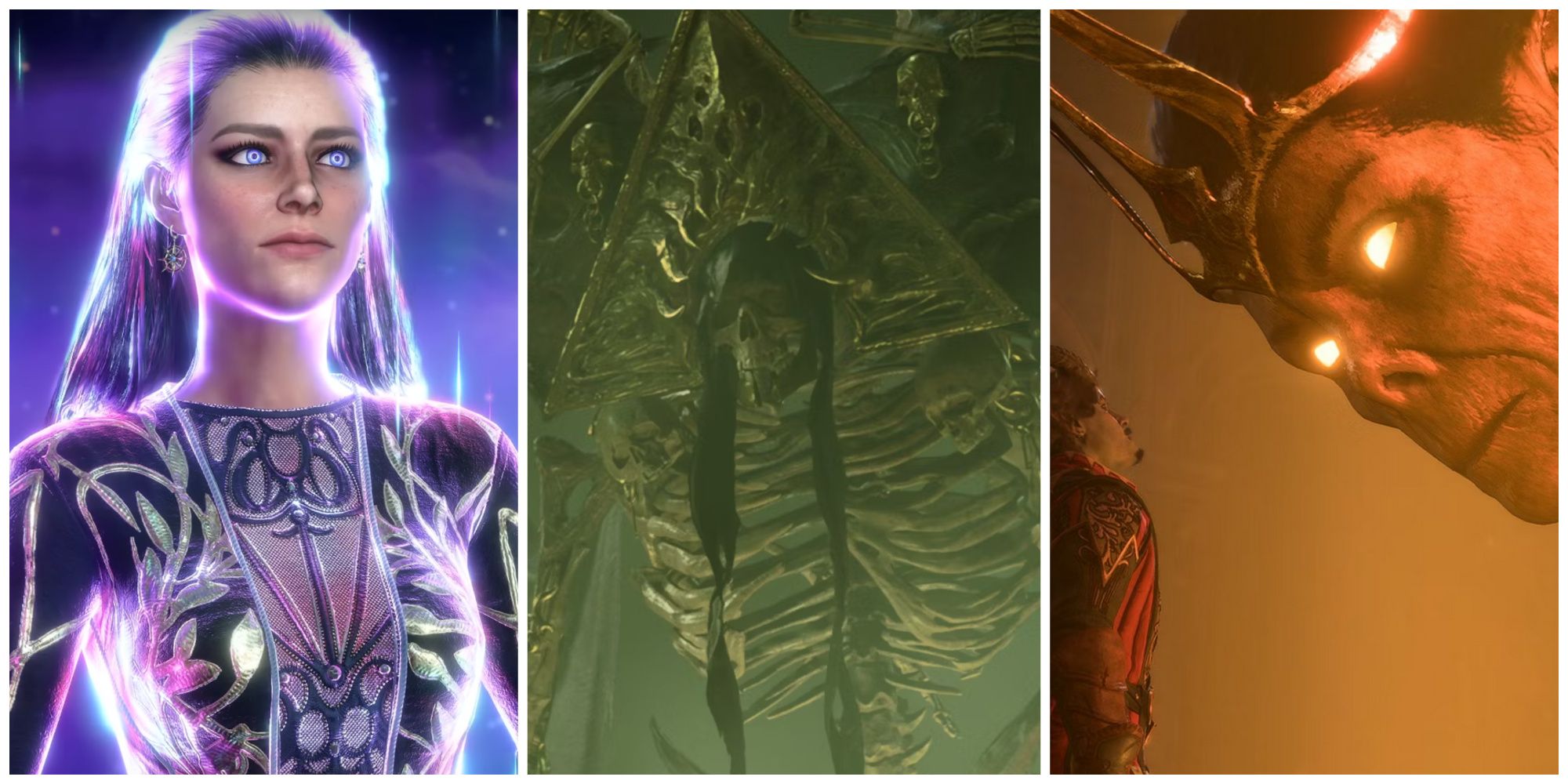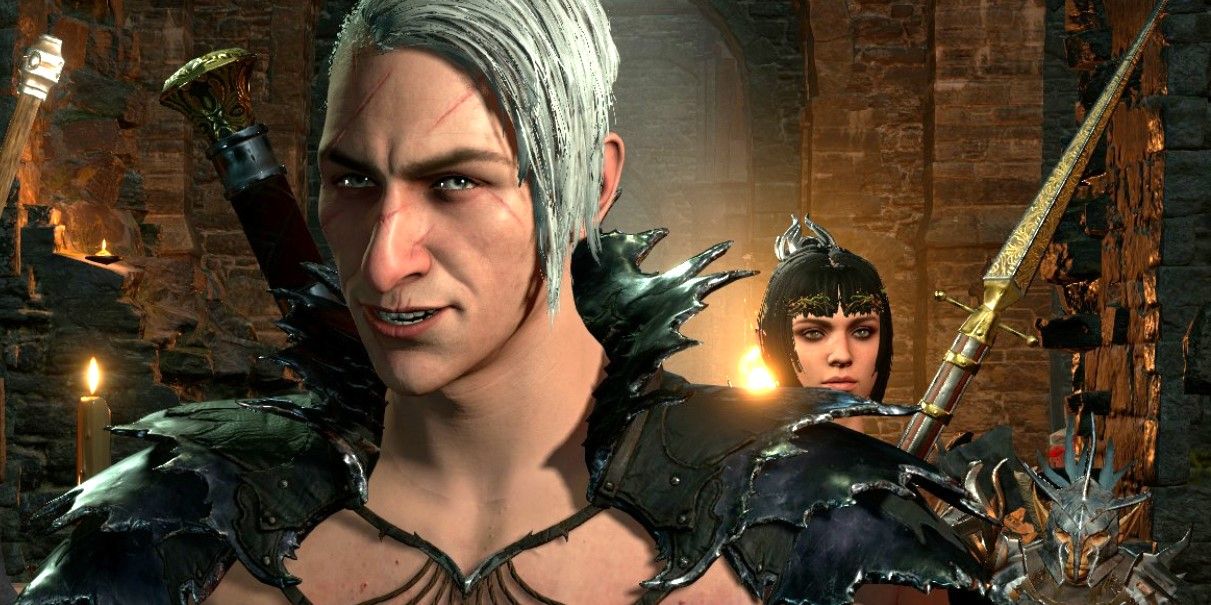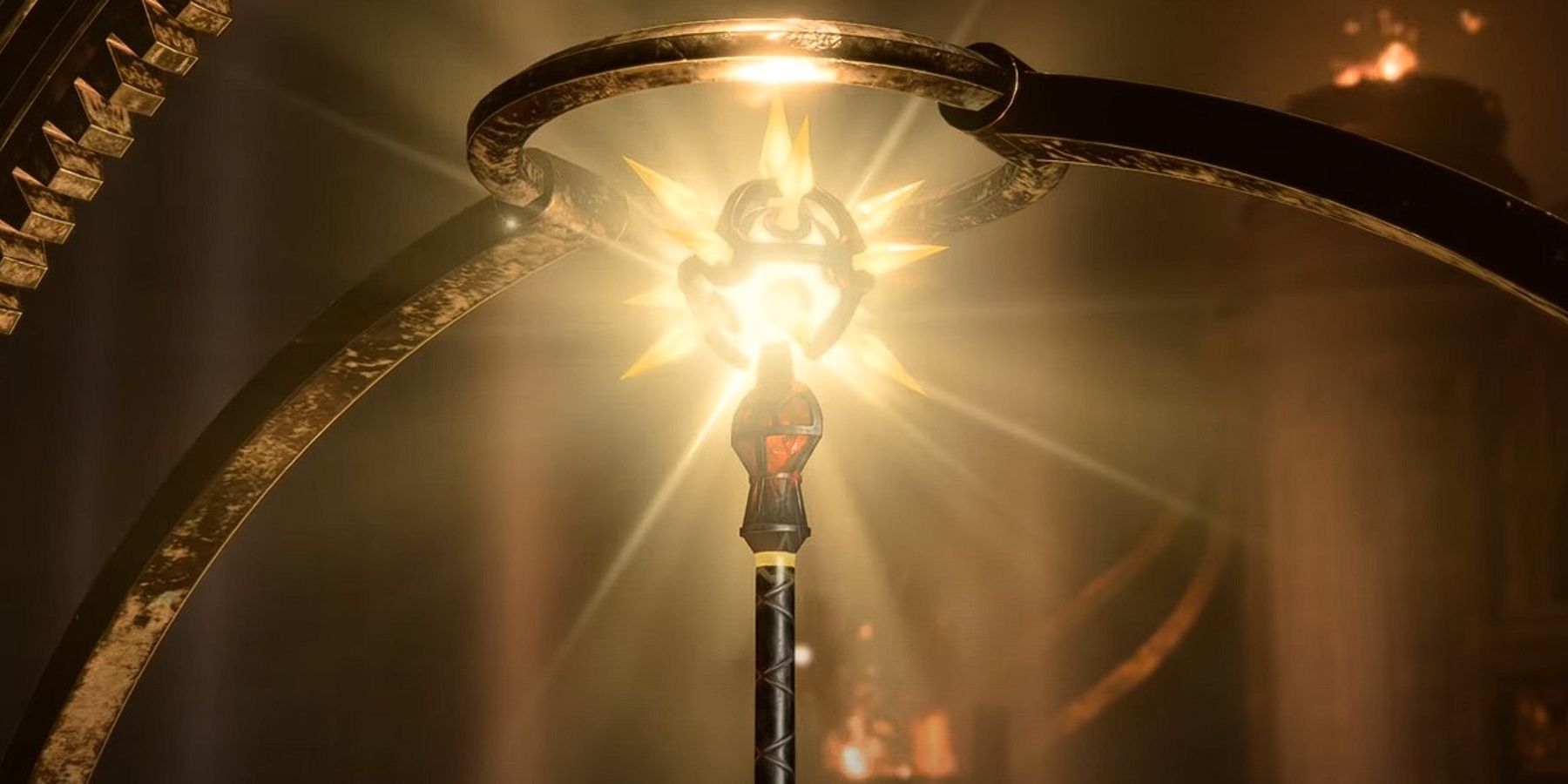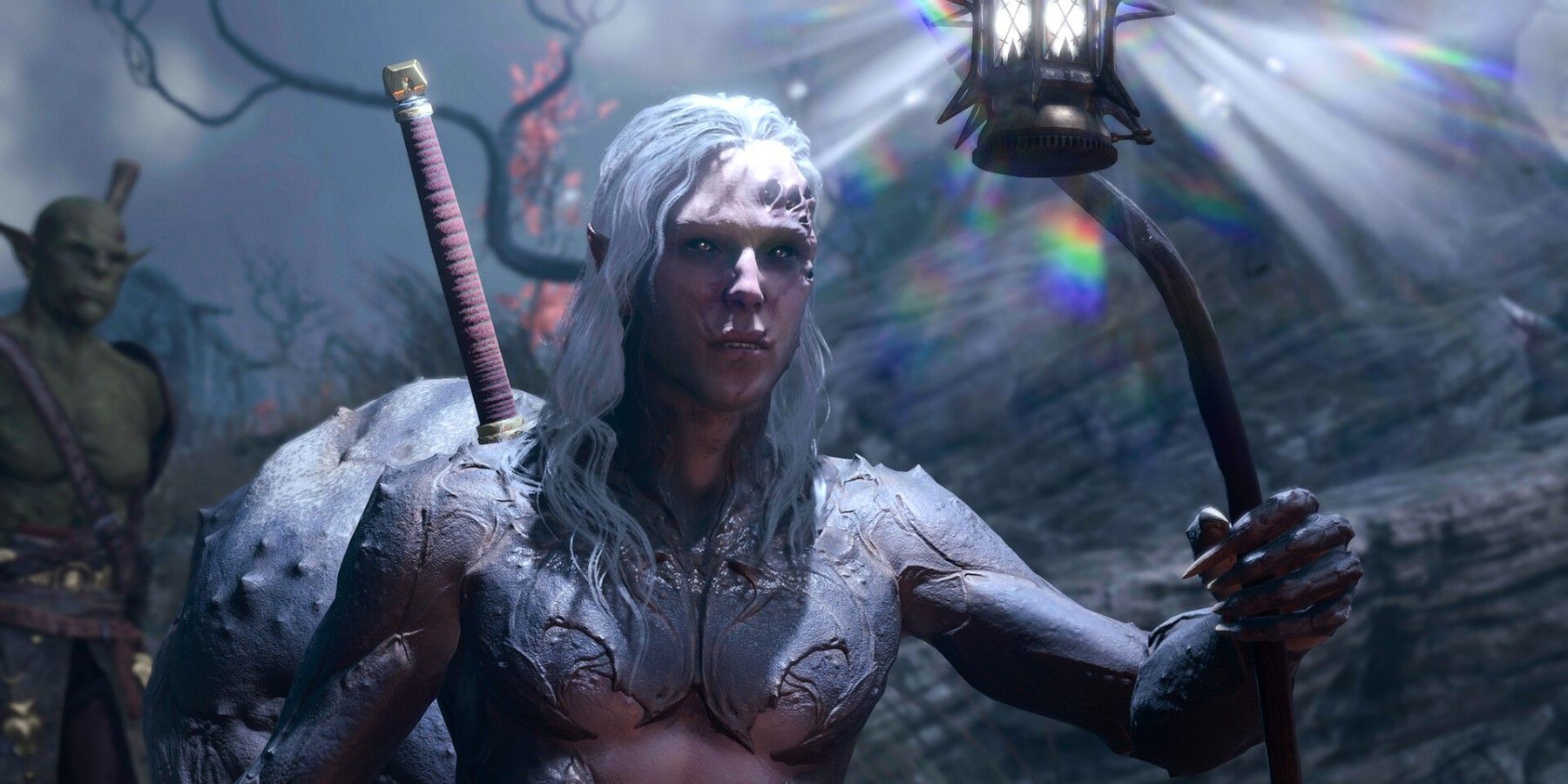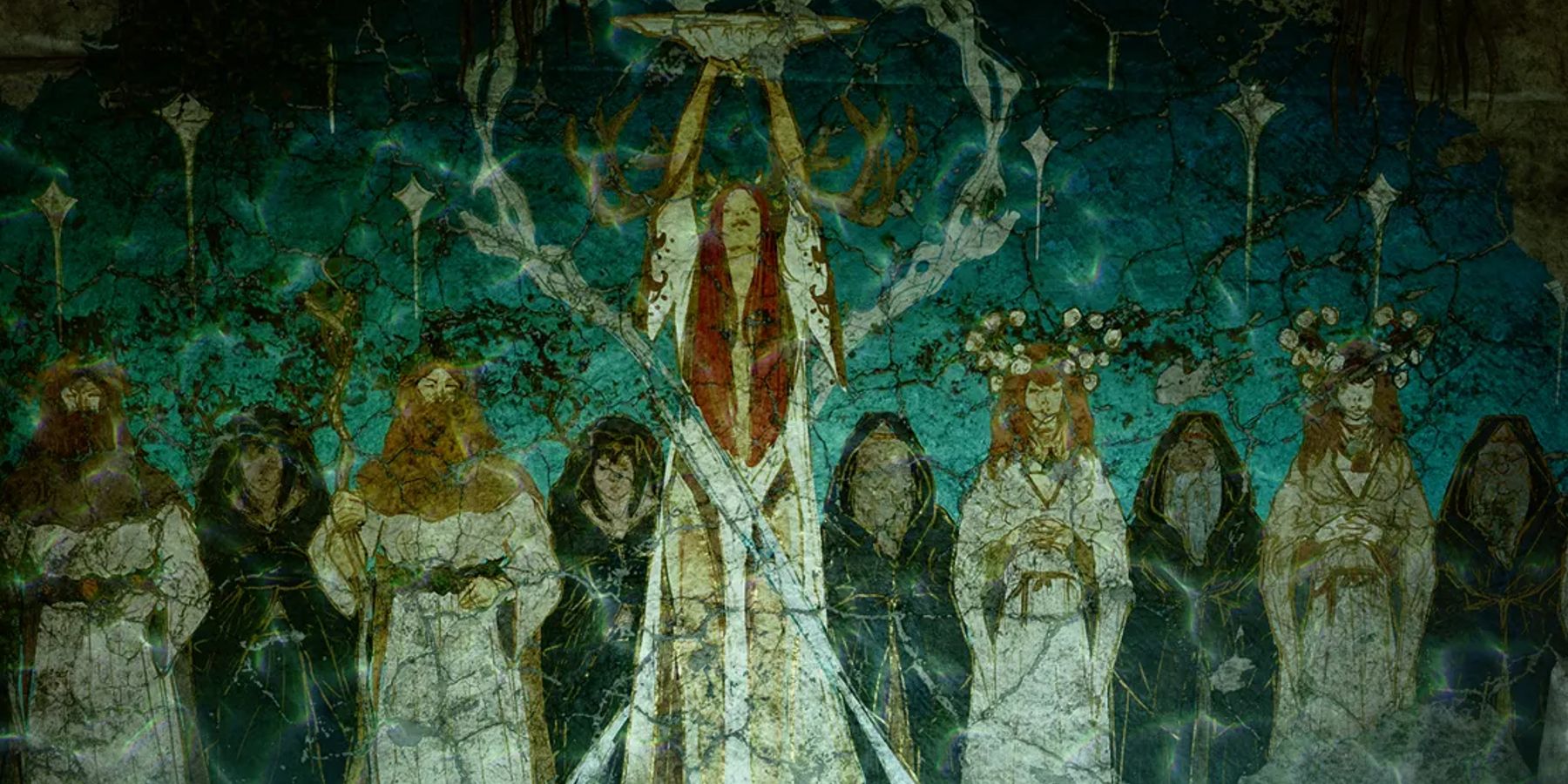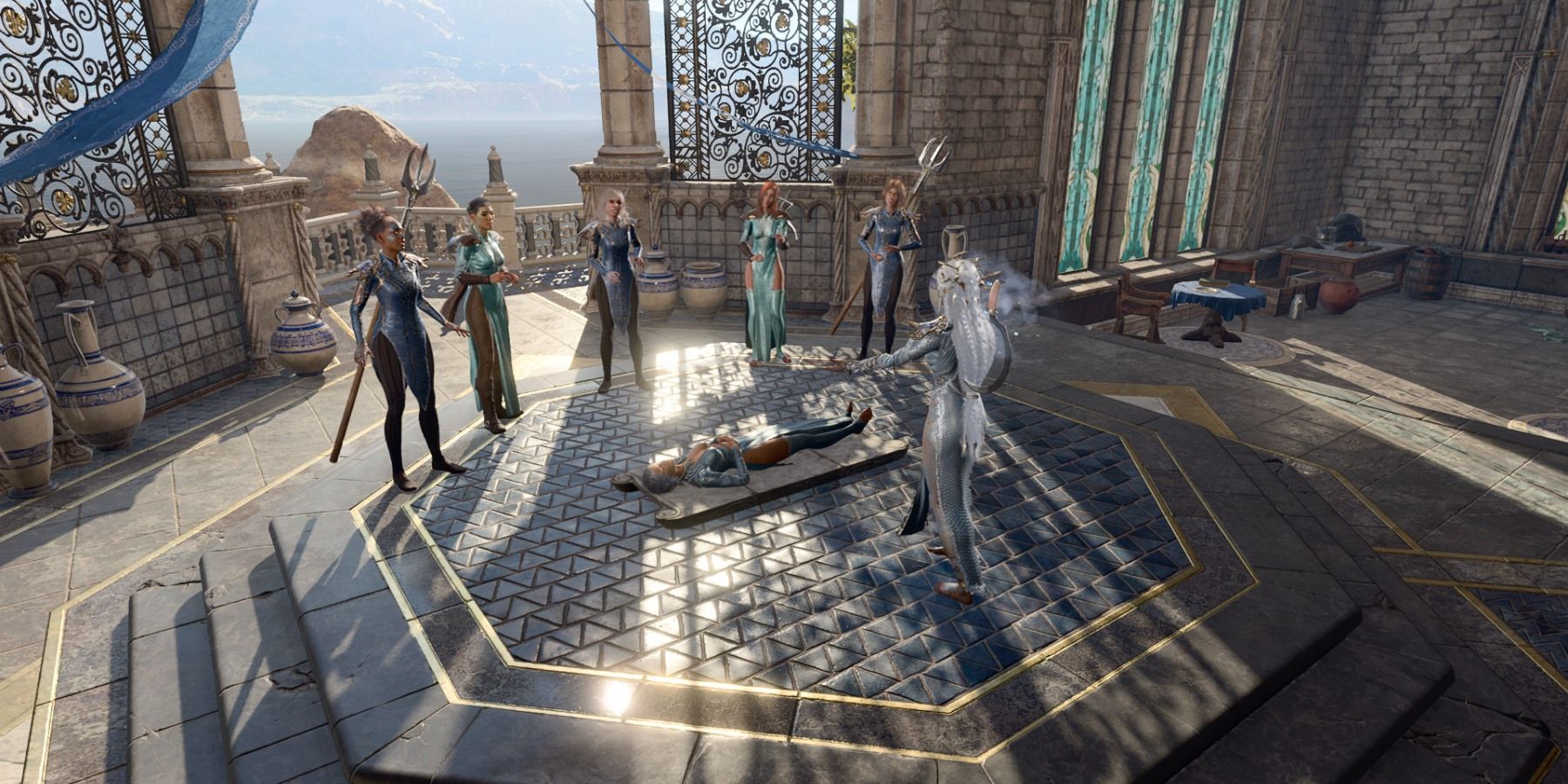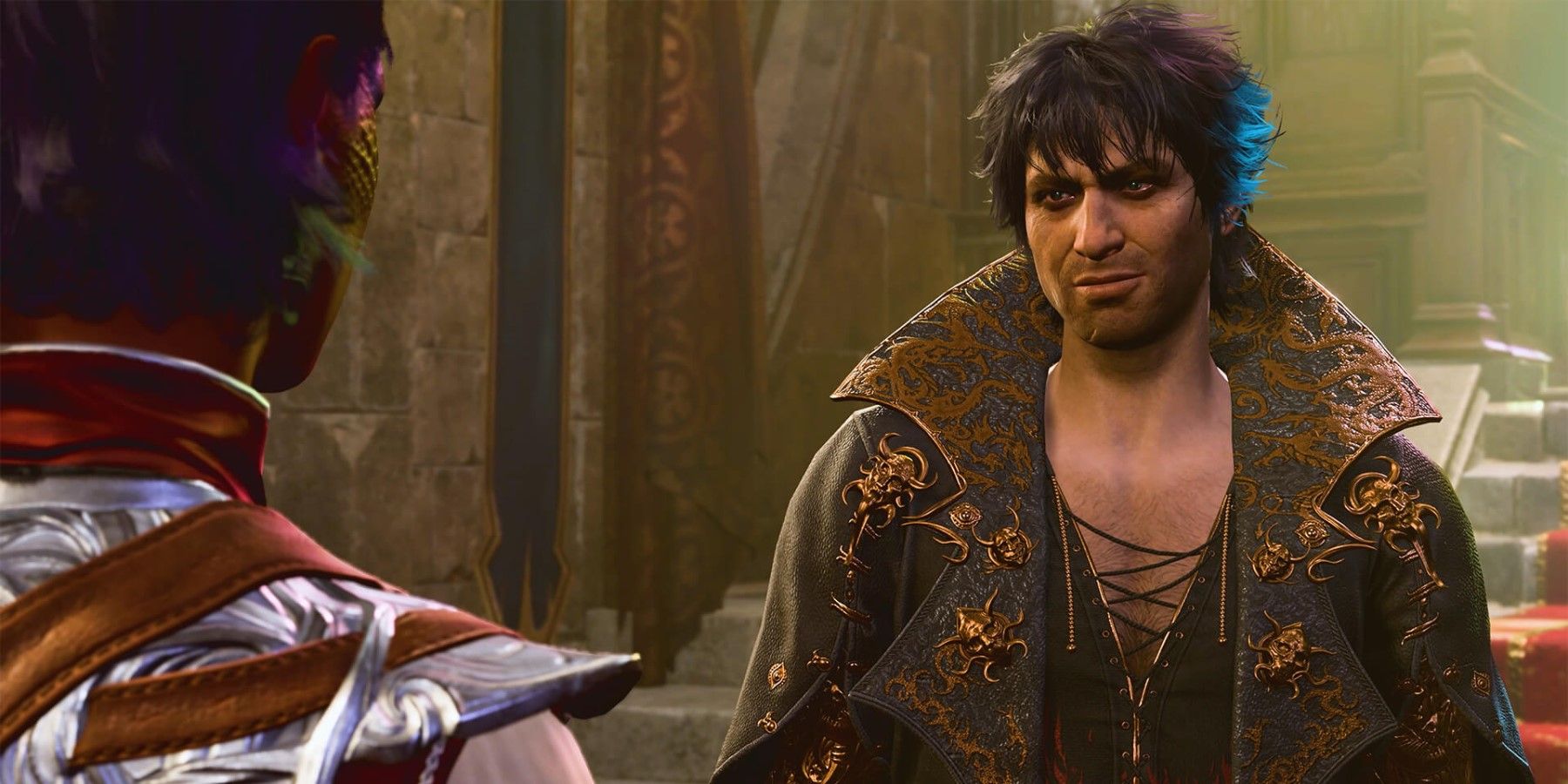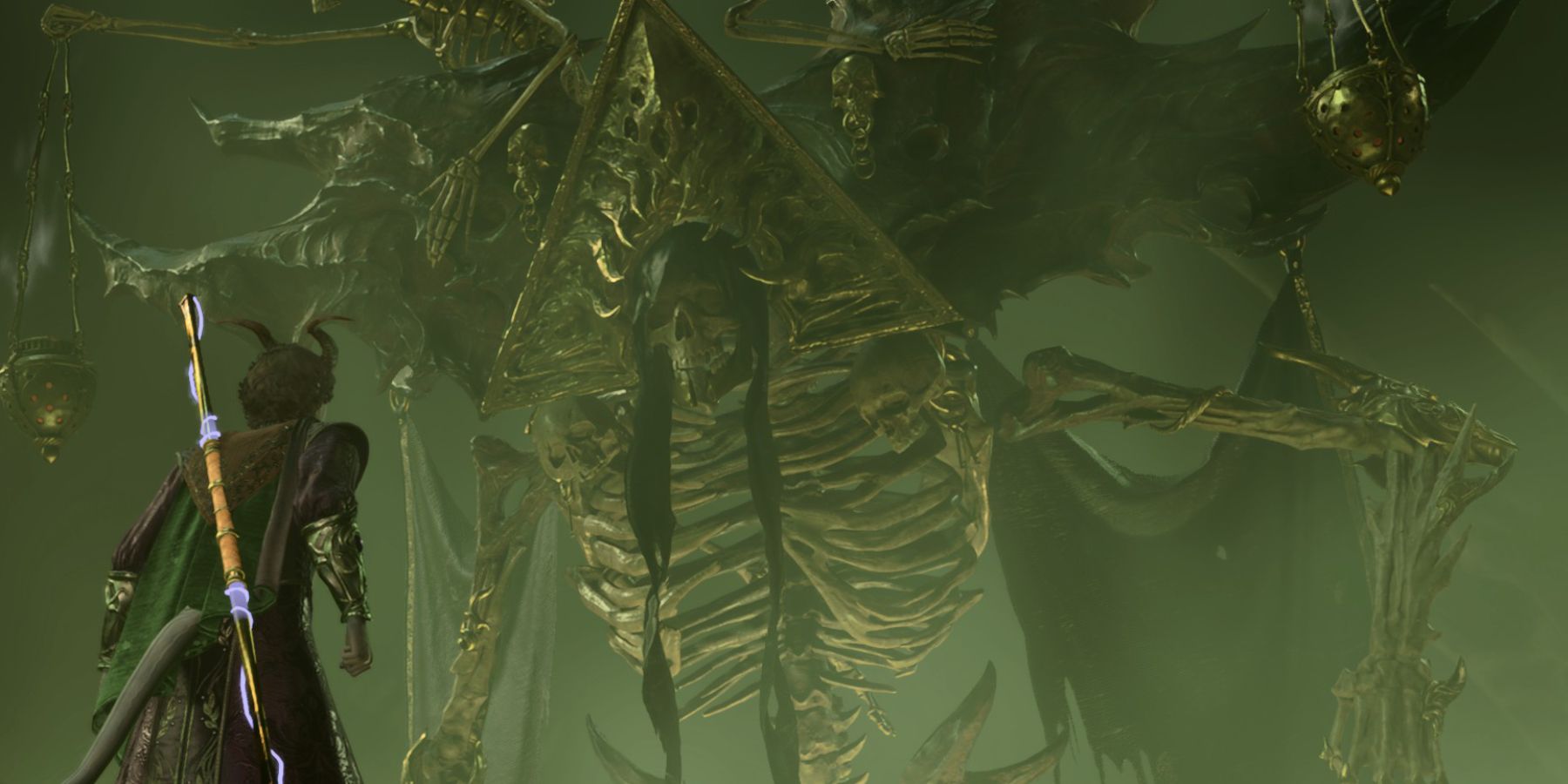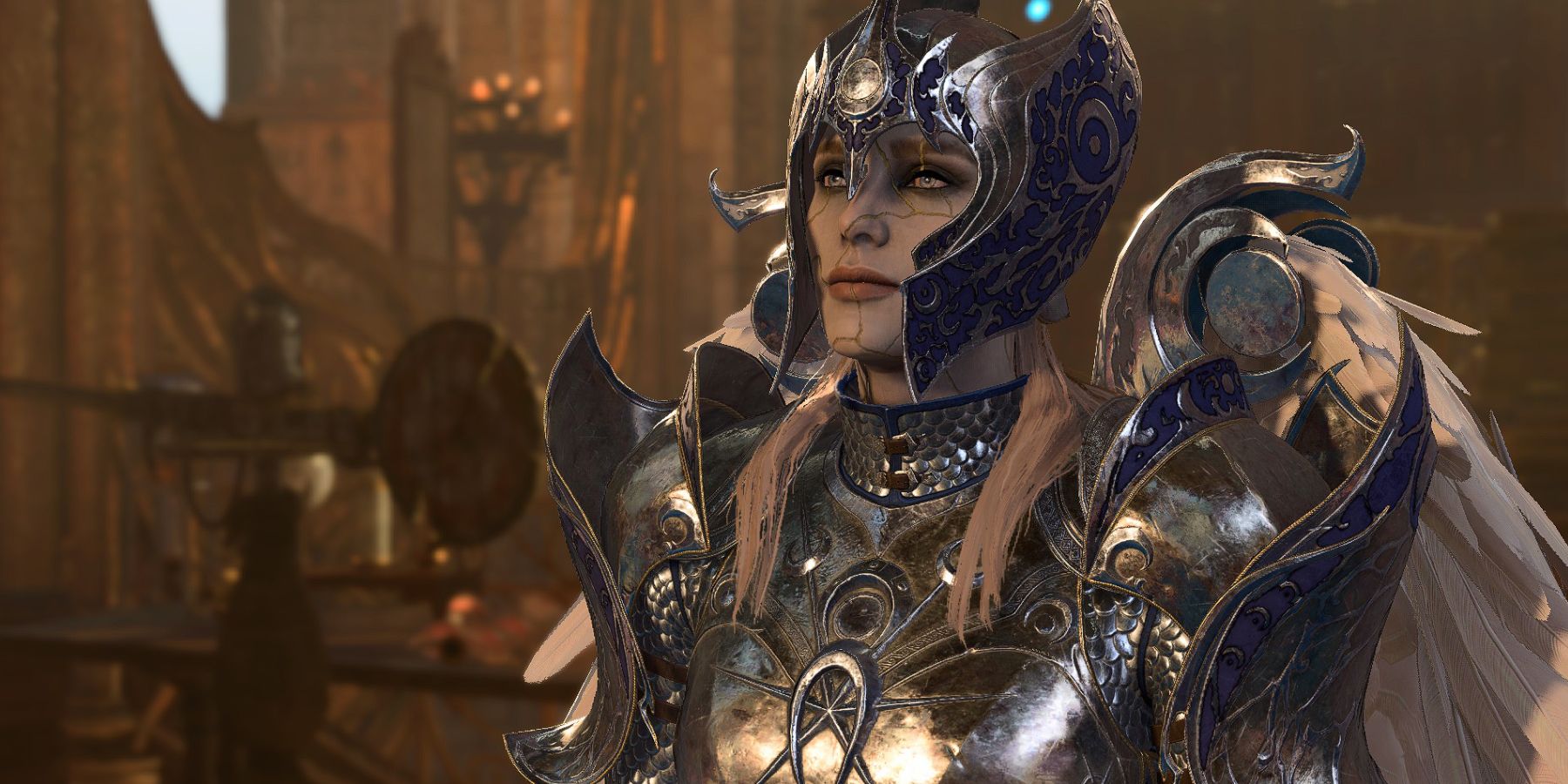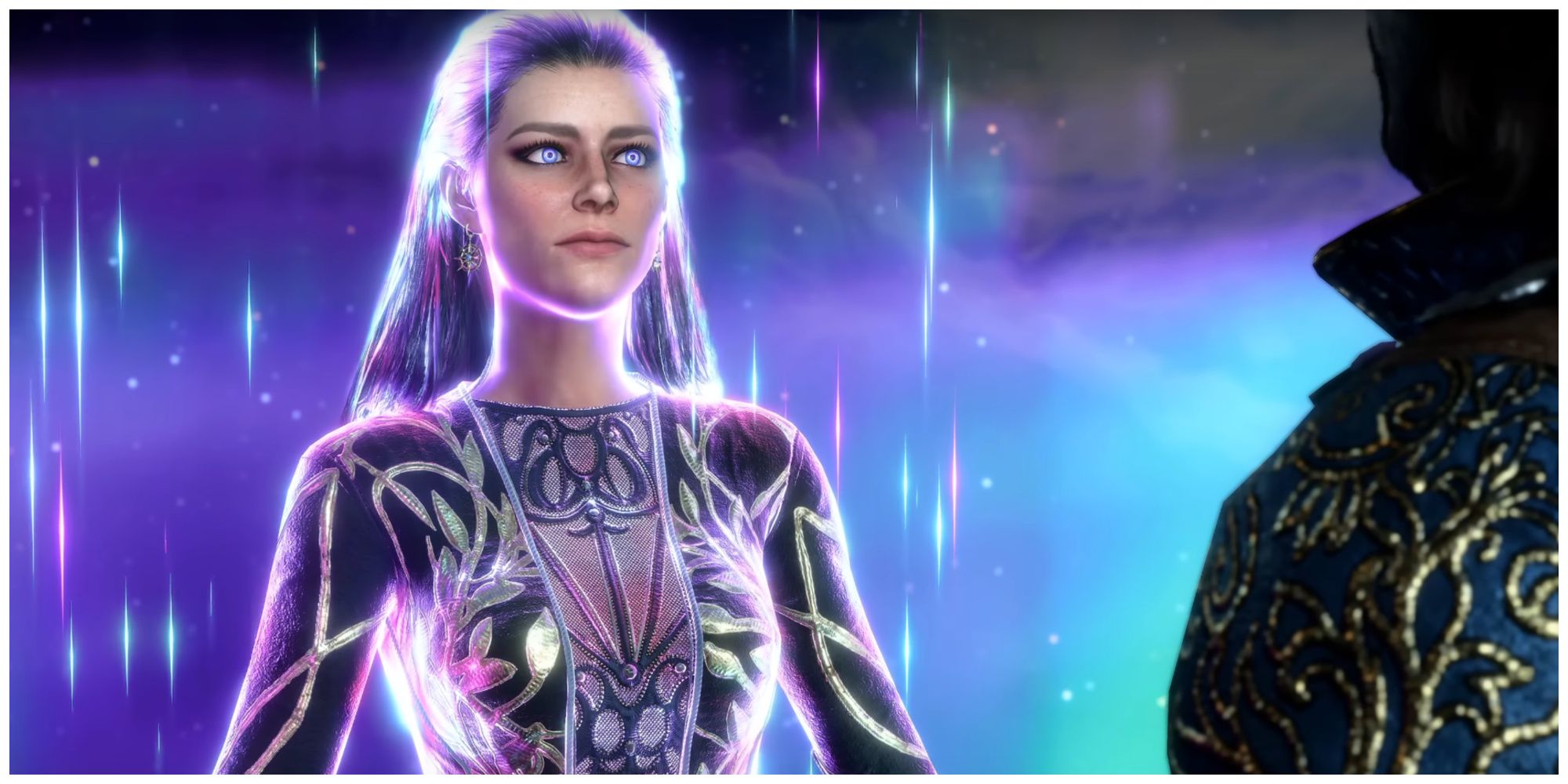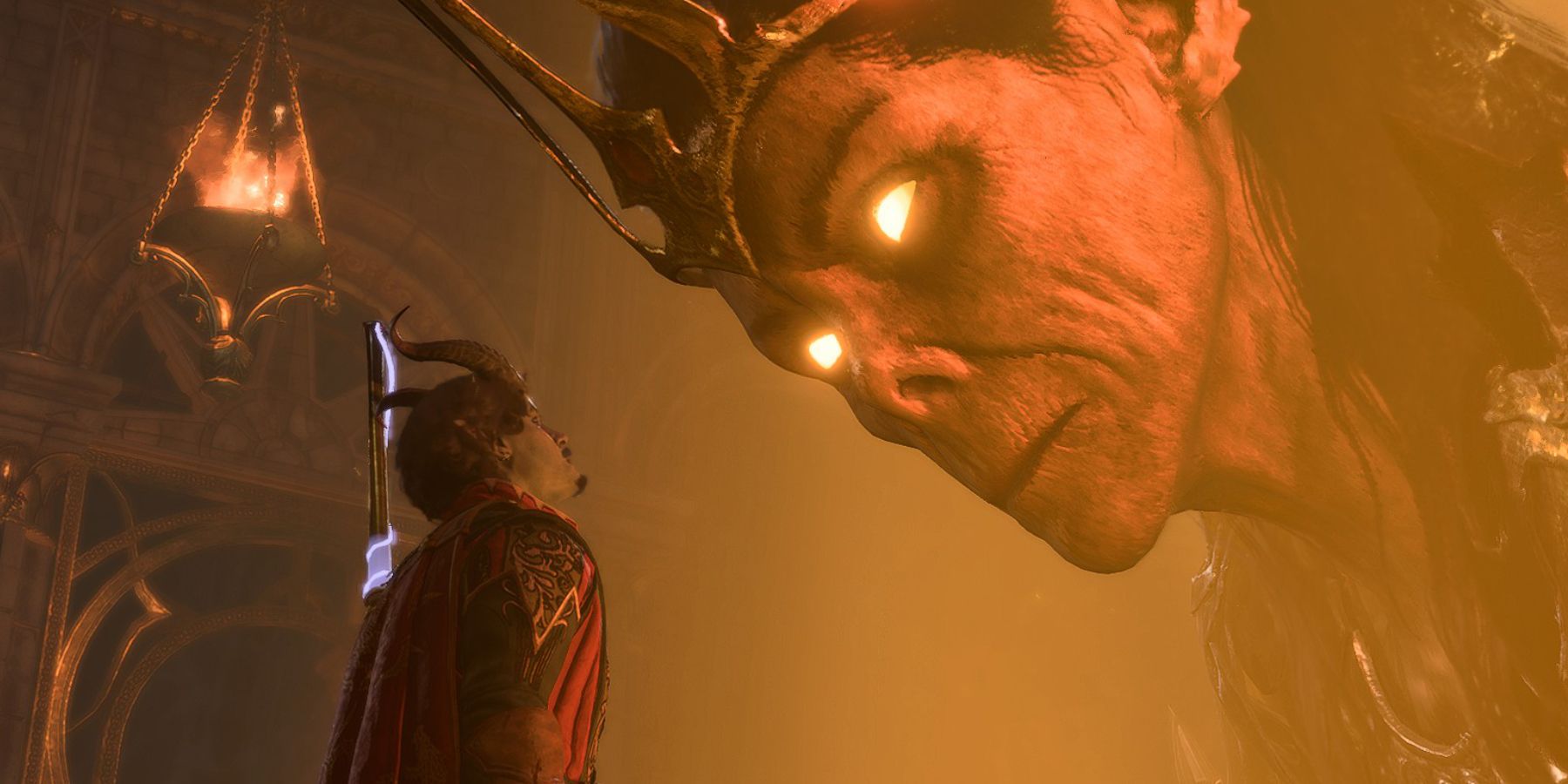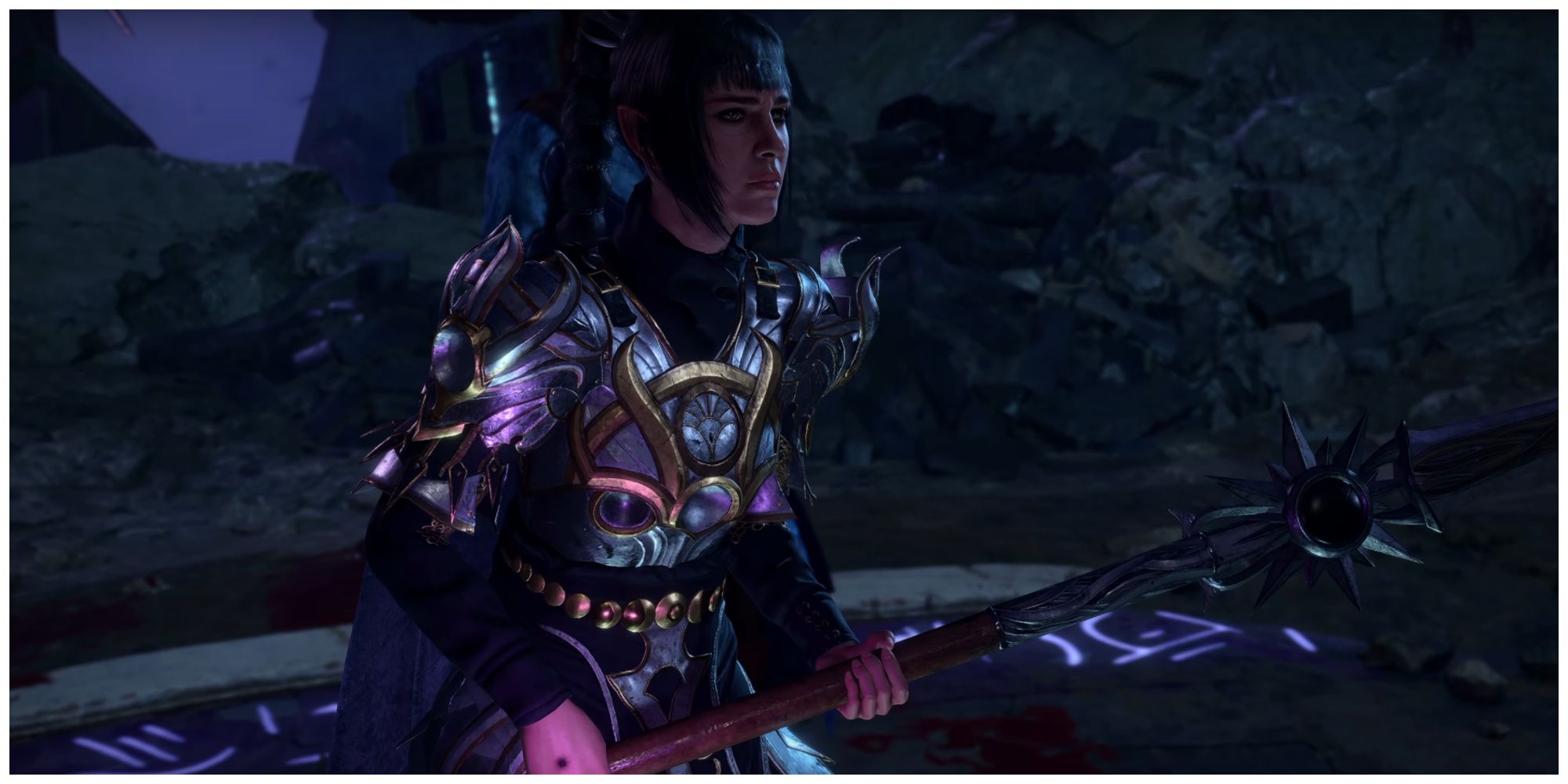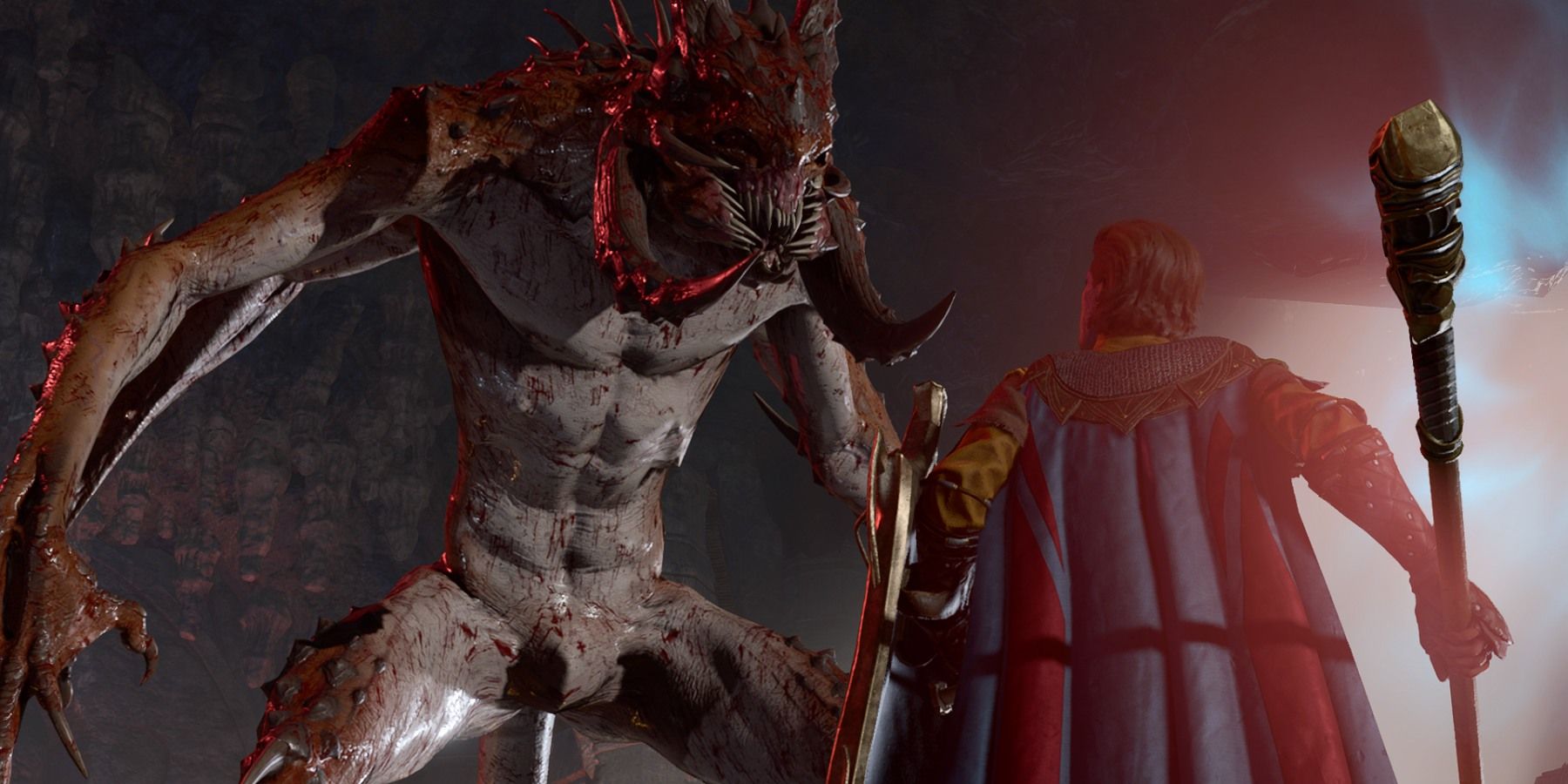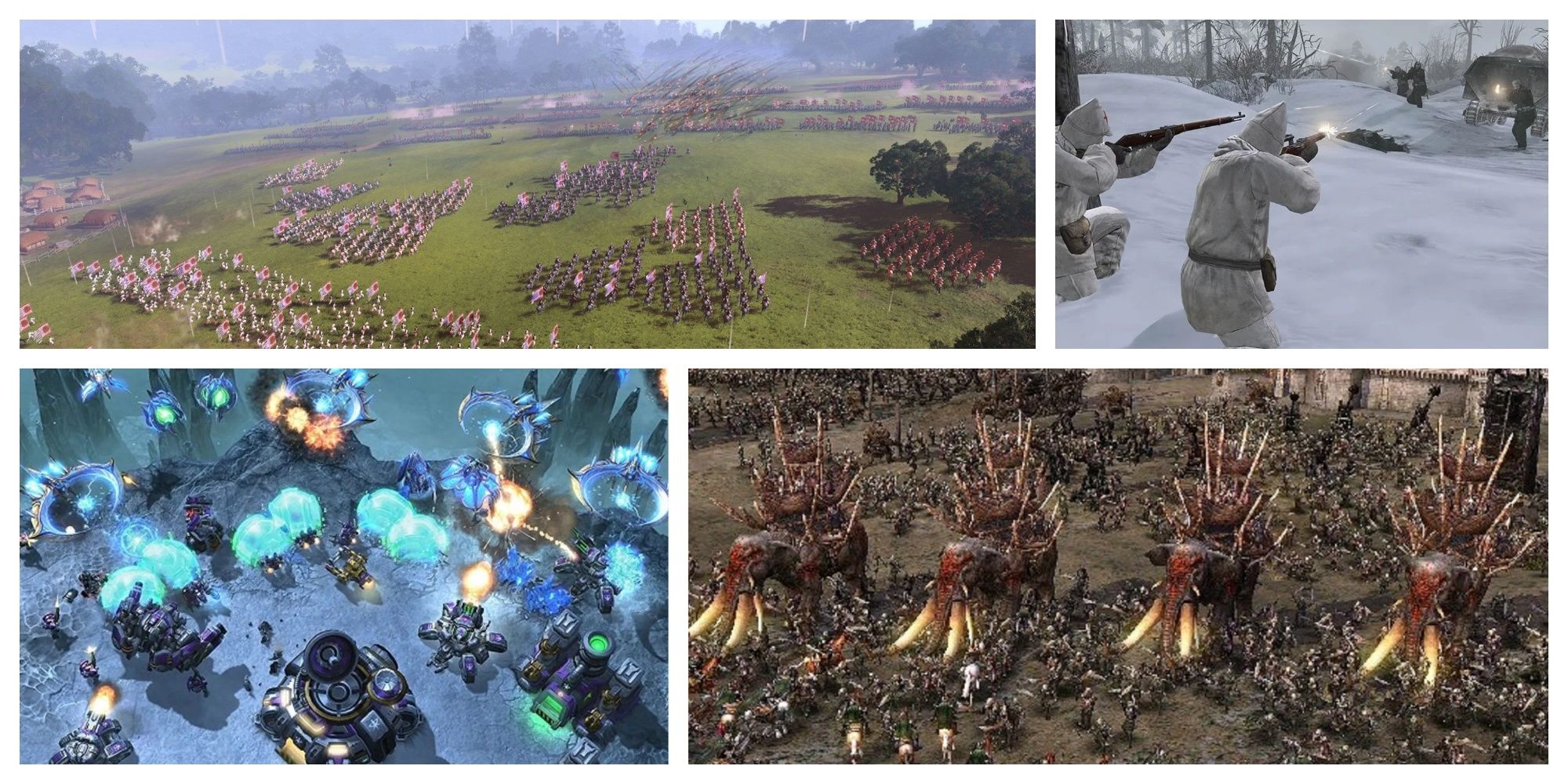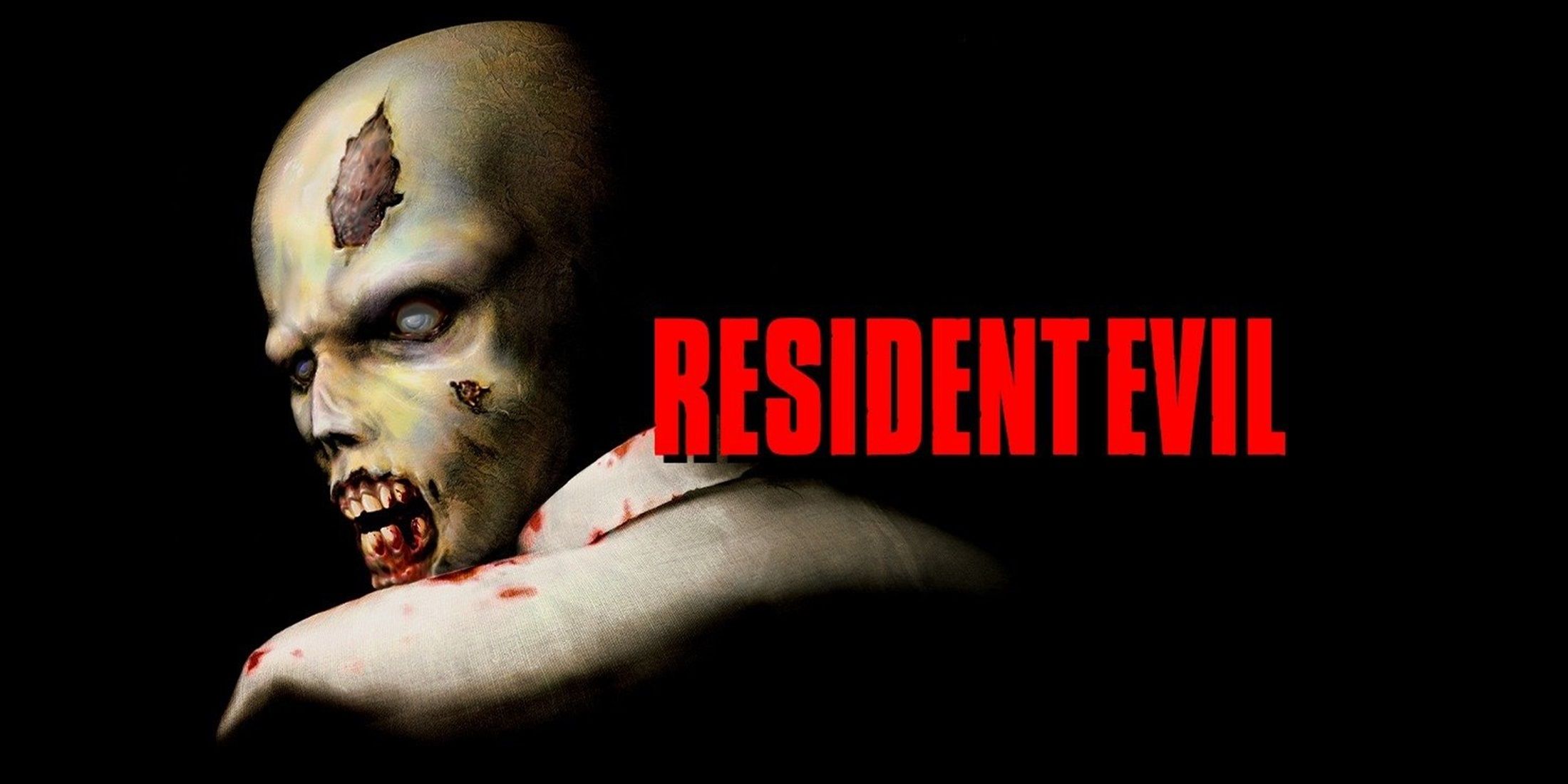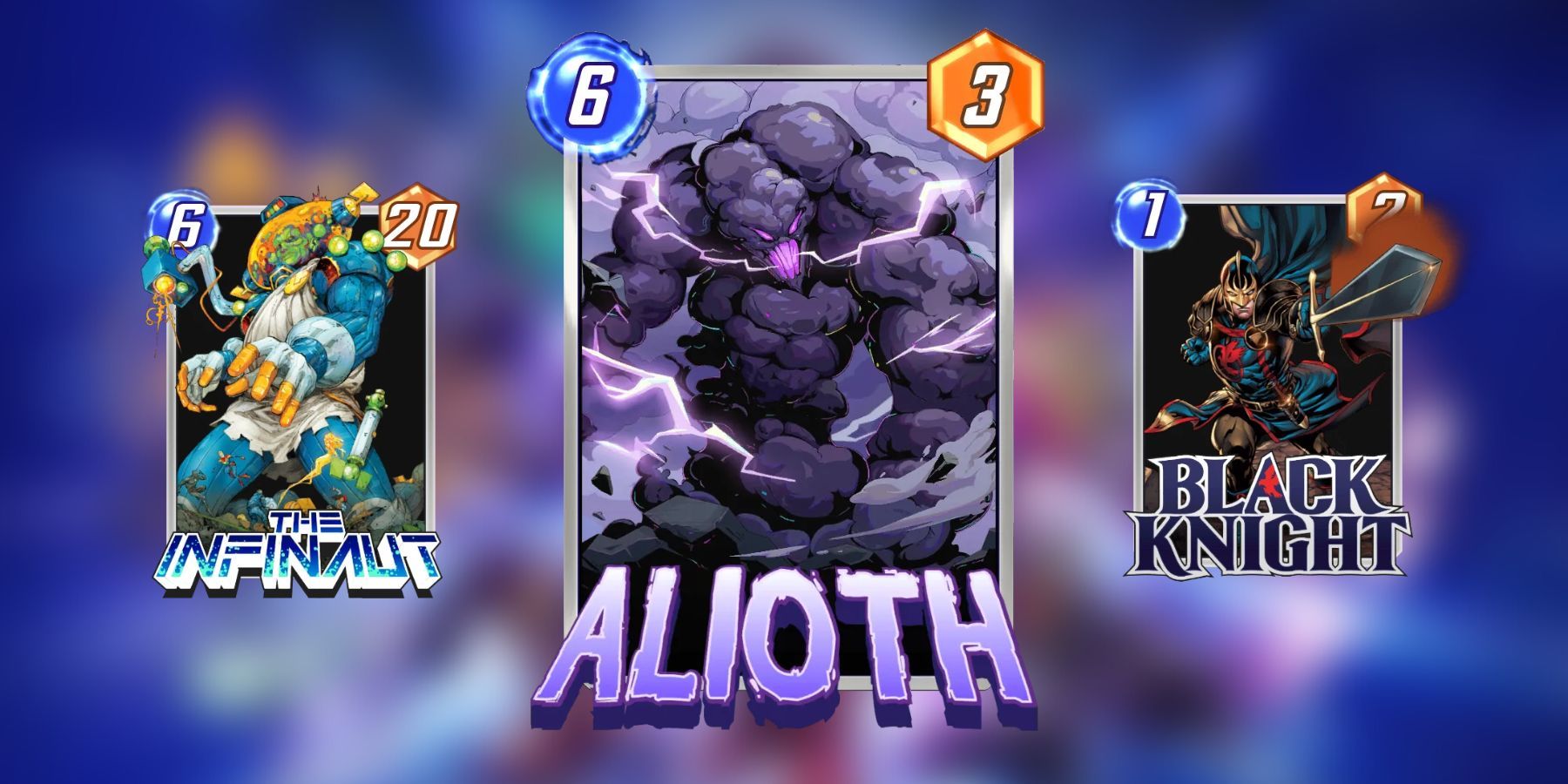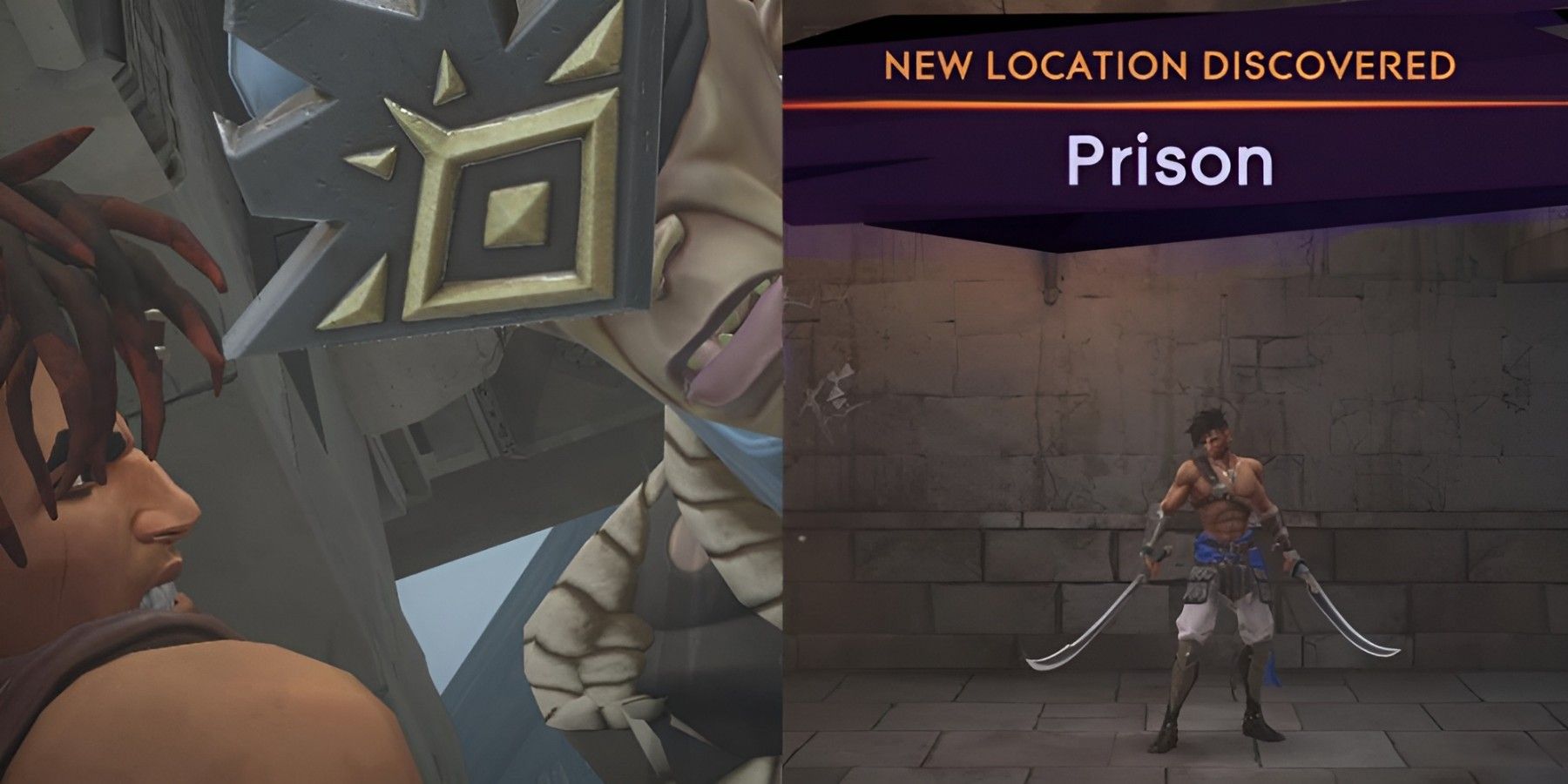Highlights
-
Baldur’s Gate 3
features a variety of deities from the Dungeons and Dragons Forgotten Realms lore, with some playing important roles in the game’s storyline. - Deities like Lolth, Silvanus, Umberlee, Bane, Myrkul, Selune, Mystra, Vlaakith, Shar, and Bhaal have significant ties to key characters and plot points throughout the game.
- Players can expect intriguing interactions, quests, and battles related to these deities, as well as opportunities for interesting dialogue and character development.
Anyone who has checked out the cleric class in Baldur’s Gate 3 will find that there is an overwhelmingly large pantheon in Faerun. That’s without including some of the more obscure deities, who do make an appearance. These deities, as with most of the lore in Baldur’s Gate 3, share the lore of the Dungeons and Dragons Forgotten Realms.
Baldur’s Gate 3: 10 Things To Do If You Are Starting To Feel Bored
There are plenty of ways to keep Baldur’s Gate 3 feeling fresh. Here are some options players should consider if they’re starting to feel bored.
While some of these deities meld into the background world-building, and some are referenced and involved under occasional circumstances, some deities play a very important role in the Baldur’s Gate 3 storyline. The following gods are absolutely integral to the plot.
Updated April 4, 2024, by Nyah Payne: Baldur’s Gate 3 proved its status as a cornerstone of gaming last year when it swept the 2023 Game Awards, including winning the prestigious Game of the Year award. Larian also brought the critically acclaimed RPG to a new audience when they released it for Xbox Series X|S. While they didn’t win their nomination for best narrative, it doesn’t detract from how compelling the storyline is, and gods play a large role in that story. For players, new and old alike, especially those who are considering a cleric run, these deities are sure to see a lot of attention.
12 Loviatar
Grants A Permanent Buff To Players Who Earn Her Favor
- Domains: Death
- Alignment: Lawful Evil
- Notable Followers: Abdirak
Loviatar is the lawful evil goddess of pain, sometimes referred to as The Maiden of Pain. Typically worshiped by clerics of the death domain, and particularly torturers, this goddess doesn’t have a particularly profound impact on the overall narrative of Baldur’s Gate 3, but players can have an interesting early encounter with one of her priests, Abdirak. Abdirak can be found in the Goblin Camp in Act One, where he has been brought on to instruct the goblins in the art of torture, although he finds their techniques primitive and crude.
The player character draws Abdirak’s attention, and he invites them to receive penance by allowing him to torture them. Players must pass multiple charisma checks, either wailing out in exaggerated agony or taunting Abdirak to hit them harder, making the checks with advantage if they’re not wearing armor. Should players impress Abdirak and, in turn, Loviatar, they will receive Loviatar’s Love, a powerful permanent blessing that grants a +2 bonus to attack rolls and wisdom saving throws when the character has 30% of their hit points or less.
11 Lathander
Lathander’s Presence Is Felt In The Rosymorn Monastery
- Domains: Life, Light
- Alignment: Neutral Good
- Notable Followers: N/A
Also known as the Morninglord, Lathander is the god of dawn, renewal, and new beginnings. He is a neutral good deity, representing the life and light cleric domains. While Lathander doesn’t play a particularly large role in the Baldur’s Gate 3 narrative, his presence is definitely felt, especially by players who visit the Rosymorn Monastery. The monastery was once a holy place to Lathander but was assaulted and infiltrated by Githyanki.
It does still contain a powerful relic of the deity, however. The Blood of Lathander is a legendary mace perfect for a cleric. It sheds holy light that blinds fiends and undead, and allows its wielder to cast the powerful level six evocation spell, Sunbeam. Given the symbolism of light versus dark, particularly within Act Two, playing a cleric to Lathander does provide a lot of narrative satisfaction.
10 Lolth
Players Meet A Drow Cursed By Lolth
- Domains: Trickery, War
- Alignment: Chaotic Evil
- Notable Followers: Kar’niss
In the lore of Dungeons and Dragons 5th Edition, Lolth is the chaotic evil drow goddess. Also known as the Queen of Spiders, she represents the trickery and war domains. Lolth is not necessarily one of the most prevalent deities in Baldur’s Gate 3, but she does get mentioned a fair deal in the Underdark.
This is particularly notable if players enter via The Whispering Depths, where they can find four diaries belonging to a Lolth fanatic who was ultimately transformed into the phase spider matriarch that players can battle in the same location. However, Lolth’s influence may be seen most clearly in Act Two when players encounter Kar’niss, leading a caravan through the Shadow-Cursed Lands. Kar’niss is a drider, a drow cursed by Lolth for failing her, doomed to live their lives as a maddened drow and spider hybrid.
9 Silvanus
Silvanus Receives A Lot Of Love Within The Druid Grove
- Domains: Nature
- Alignment: Neutral
- Notable Followers: Halsin, Kagha, Nettie
Silvanus may be one of the first deities that players see mentioned a lot. Silvanus is a true neutral god, representing the wilds and the nature domain. Known as the Oak Father, he is revered by the druids in the Druid Grove, one of the first major locations that players will visit. While the companion character, Halsin, is less vocal about his religion than some companions, players who get to know him will hear the Oak Father’s blessings on occasion.
Silvanus may not be hugely prominent throughout, but interactions discussing Silvanus and his beliefs can be quite integral in Act One. In particular, players who take Silvanus’s teachings to heed (and find a damning letter hidden in a tree) can convince the stand-in Archdruid, Kagha, to return to Silvanus’s path after a run in with some Shadow Druids turned her towards darkness.
8 Umberlee
Umberlee Followers Caught In A Murder Mystery
- Domains: Tempest
- Alignment: Chaotic Evil
- Notable Followers: N/A
Umberlee is a chaotic evil sea goddess, representing the tempest domain. While she may be an evil goddess by Dungeons and Dragons standards, Umberlee has a large temple and plenty of worshipers, which players can find in Baldur’s Gate 3 in Act Three. Showing her more sinister side, there is also a hidden cave beneath Umberlee’s Temple, which players can’t explore without trespassing. Players can steal substantial loot from Umberlee, triggering an ice storm and sahuagin battle in the process.
In general, the temple gives life to Umberlee as a goddess, as players can talk to the various NPCs who have come to pay their respects to the Queen of the Depths before they depart for the sea. Umberlee and her worshipers are also involved in an intriguing quest surrounding the recent death of one of her followers and a strange presence in the waters of the harbor. In order to solve the mystery and appease the Waveservants, players will need to investigate Redhammer in Flymm Cargo. Interestingly, Umberlee can be referenced as early as Act One, the moment players step off the Nautiloid, if they happen across a book of shanties for the B*tch Queen, as she is also known.
7 Bane
Bane’s Chosen Is One Of The Game’s Major Villains
- Domains: Order, War
- Alignment: Lawful Evil
- Notable Followers: Gortash
Bane is a prevalent deity who comes as a package deal within the Baldur’s Gate 3 storyline. Bane is a lawful evil god, representing tyrants and the domains of order and war, and he is one of The Dead Three. Since The Dead Three are the deities who have commanded their chosen to control the Absolute to enslave Faerun in Baldur’s Gate 3, Bane is automatically a pretty important deity to the plot. His chosen, Gortash, is a primary antagonist in the game. Despite this involvement, players don’t actually get to see or hear all that much about Bane compared to some of the other gods.
The best interaction that players can have with Bane is if they kill Gortash and then use the ‘Speak With Dead’ spell on his body. Instead of Gortash answering (or refusing to, since the players killed him), it is Bane himself who answers, informing the player that Gortash is suffering at his hands for failing him. However, he doesn’t seem that annoyed with Gortash’s killers, instead seeming interested in them as potential followers with a healthy heaping of ambition. Interestingly, this scene initially wasn’t voice acted, in a way adding to its sinister feel. It has since been voiced.
6 Myrkul
Most Of Act Two Leads To The Fight With Myrkul
- Domains: Death
- Alignment: Neutral Evil
- Notable Followers: Ketheric Thorm
Speaking of The Dead Three, Myrkul is another god in the trio. He is a neutral evil god of necromancy and the death domain, and his chosen is Ketheric Thorm. Ketheric Thorm is the main antagonist in the second act of Baldur’s Gate 3, and interactions with him can culminate in a grand boss fight.
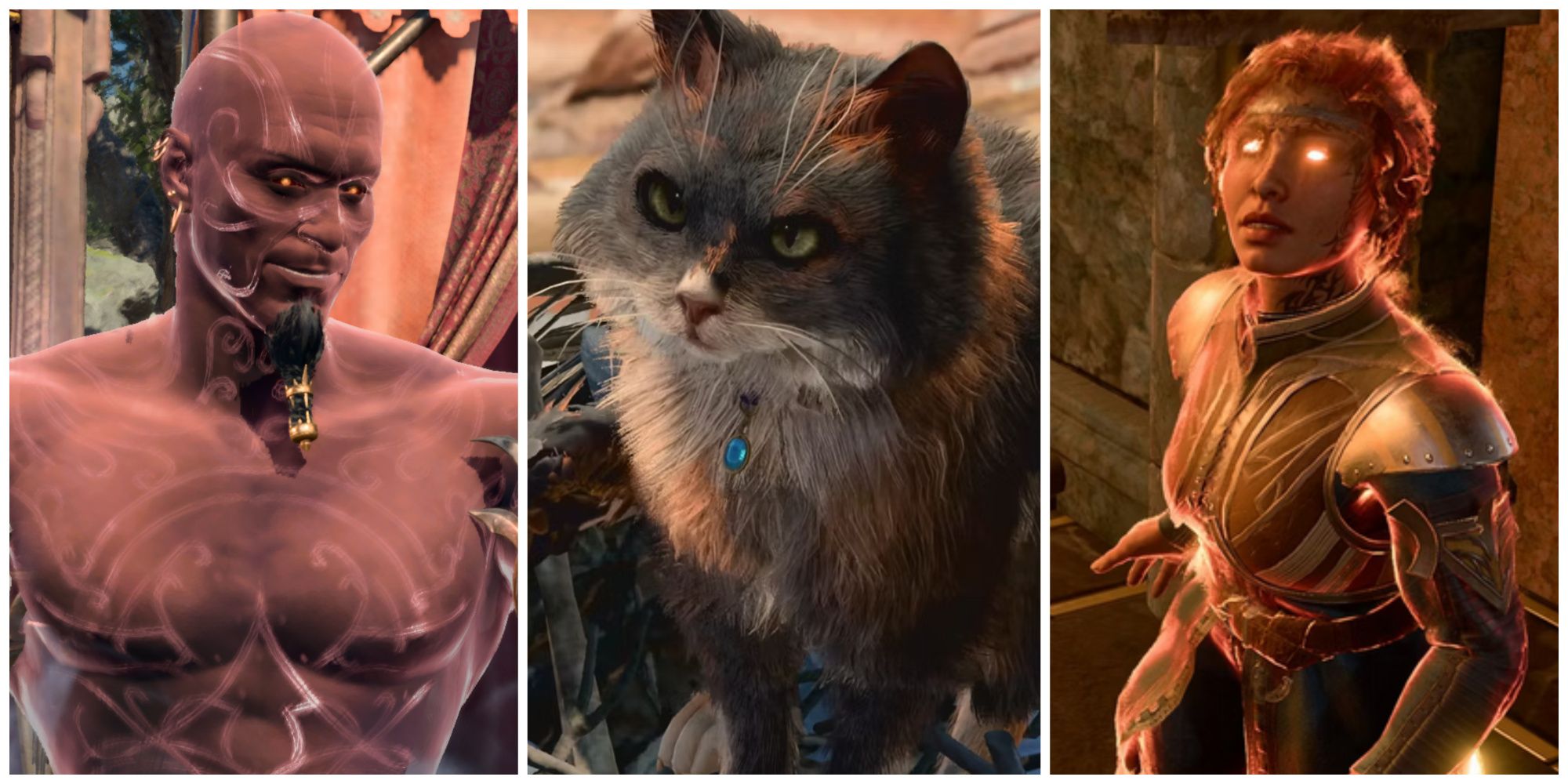
Baldur’s Gate 3: 11 Best Rings You Can Get In Act Three, Ranked
These are the best enchanted rings to find and equip in the third and final act of Larian Studios’ Baldur’s Gate 3.
What makes Myrkul more prevalent than Bane is that an avatar of Myrkul himself can tag into that fight. In a sense, players get to battle the Lord of Bones himself, and it makes for a pretty intense clash. Myrkul is also granted more depth thanks to the intricacies and depth of his chosen, Ketheric, who is center stage for most of Act Two and has a devastating past due to the loss of his daughter, Isobel, and the subsequent loss of his faith as he sought to revive her by any means, eventually turning to The Lord of Bones.
5 Selune
The Lady of Silver Protects Characters From Their Fears
- Domains: Knowledge, Life, Twilight
- Alignment: Chaotic Good
- Notable Followers: Isobel, Dame Aylin, Shadowheart (determinant), Ketheric Thorm (former)
Selune is a chaotic good moon goddess, traditionally representing the knowledge, life, and twilight domains. Within Baldur’s Gate 3, she is a very important deity, whose plot ties are flooded with spoilers. Many prominent characters follow Selune. Notably, the aasimar, Dame Aylin, is a daughter of Selune, and her partner, Isobel, is a cleric to the Moonmaiden. Isobel is the daughter of Ketheric Thorm, who also used to worship Selune before Isobel’s death.
Most important, however, is the connection between Shadowheart and Selune. As a follower of Shar, Shadowheart despises Selune, reflecting Shar’s own hatred for her twin. But it turns out that Shadowheart and her family were followers of Selune, and Shar stole Shadowheart away, wiping her memories with the goal of raising a Selunite to worship her instead. Given this relationship, playing as a cleric of Selune can lead to some interesting dialogue between player characters and Shadowheart.
4 Mystra
Mystra Is The Lover And Deity Of An Origin Character
- Domains: Knowledge
- Alignment: Lawful Neutral
- Notable Followers: Gale, Elminster
Mystra is the lawful neutral goddess of magic, spells, and the weave, associated with the knowledge domain. Her importance to the narrative comes from her ties to the companion character, Gale. The pair have a colorful past, with Gale being a disgraced ex-lover to the goddess, as he sought to cross her boundaries.
In an attempt to regain her favor and return some of her lost magic to his lover, the foolhardy wizard managed to absorb a volatile piece of Netherese magic, capable of ending countless lives. Gale’s Netherese orb and his past with Mystra are continually relevant plot points, and his relationship with Mystra by the end of the game is entirely down to the players. Especially if players are controlling Gale as an origin character, players can even have some interactions with Mystra herself.
3 Vlaakith
Vlaakith Is Integral To The Arc Of Origin Character, Lae’zel
- Domains: N/A
- Alignment: Neutral Evil
- Notable Followers: Lae’zel (determinant)
Vlaakith is another deity who is prevalent due to her connection to a companion character, this time the Githyanki fighter, Lae’zel. Vlaakith is a tricky deity as, by Dungeons and Dragons lore, Vlaakith isn’t a goddess. She is the evil Lich Queen leader of the Githyanki. In Baldur’s Gate 3, however, she is treated as a goddess and seems to have powers akin to one. To put it lightly, players should be wary when defying her avatar.
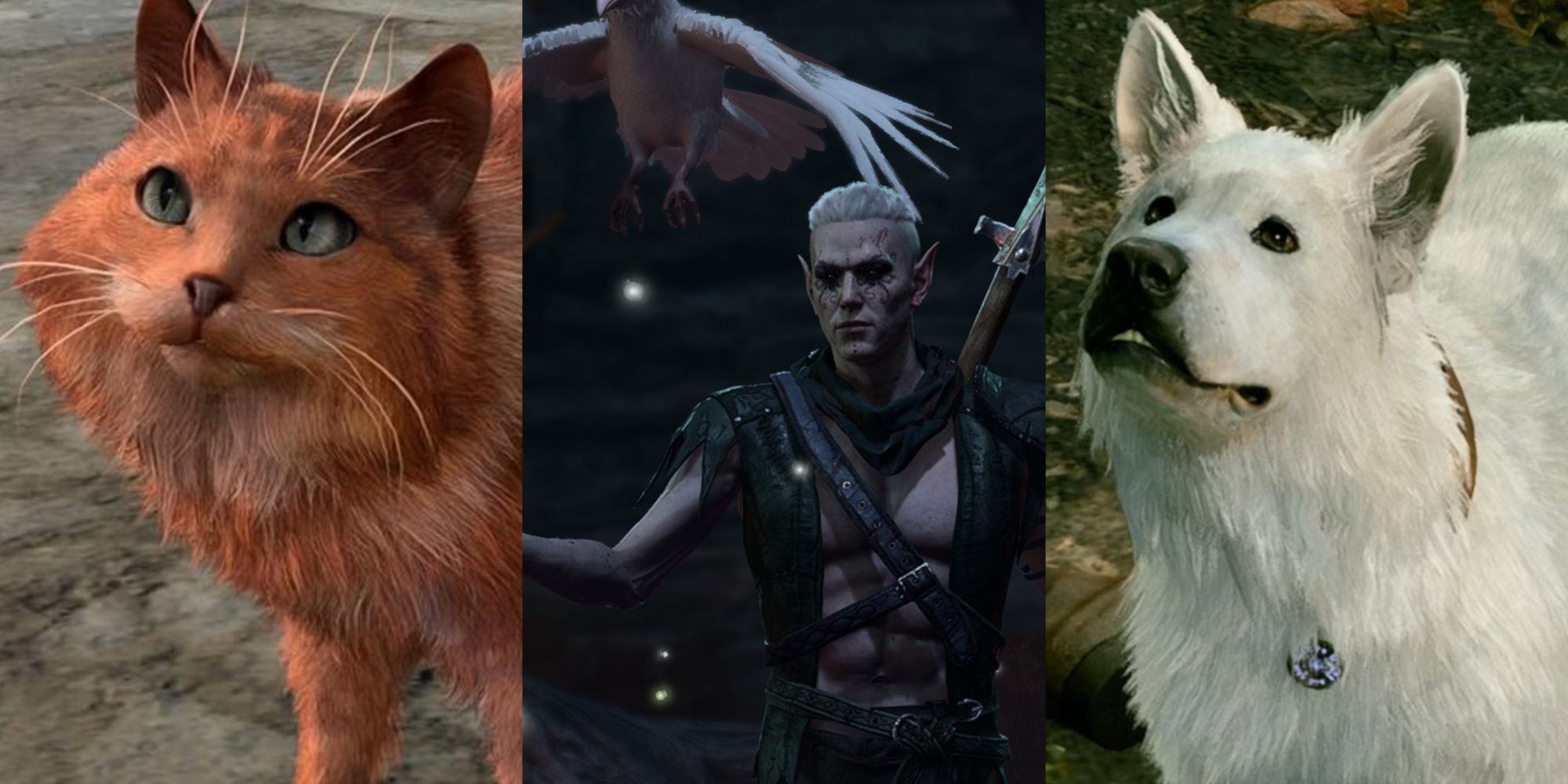
Baldur’s Gate 3: Best Animal And Human Duos, Ranked
Baldur’s Gate 3 has plenty of character pairings that highlight the relationship between a human and their beloved animal companion.
Regardless of her true status, Vlaakith is an integral part of Lae’zel’s character and arc, and players can have some particularly interesting interactions with her. This comes down to the fact that Vlaakith is deceiving all of her githyanki followers. Should Lae’zel begin to uncover this deception, she can undergo a crisis of faith that is one of the most engaging elements of her character. Run-ins with Vlaakith and her githyanki followers are also likely throughout the plot, as the Astral Prism that protects the characters from the voice of the Absolute actually contains the githyanki prince, Orpheus, who is one of the few people that can threaten Vlaakith’s rule.
2 Shar
The Dark Goddess Manipulates
- Domains: Death, Trickery
- Alignment: Neutral Evil
- Notable Followers: Shadowheart (determinant), Ketheric Thorm (past)
Shar is the dark sister of Selune, mentioned previously, a neutral evil deity of loss and night, and related to the death and trickery domains. Shadowheart is, as most players will be aware, a trickery cleric, and Shar is her patron. Of course, it is later revealed that Shar has stolen Shadowheart away as a child for her twisted gain. This conflict between Shadowheart, Shar, and her lost past leads to many engaging interactions throughout the storyline.
While these companion moments are wonderful, interactions with Shar are inevitable for any player. The curse that plagues the Shadow-Cursed Lands is the result of Ketheric Thorm’s grief-stricken worship of Shar, and players must progress through the Gauntlet of Shar to complete Act Two. Shar’s dark influence is felt throughout the game, even if a player neglects to get involved with Shadowheart’s arc.
1 Bhaal
Deity To Prominent Antagonists, With Connection To Dark Urge Origin
- Domains: Death
- Alignment: Neutral Evil
- Notable Followers: Orin, Sarevok, Dark Urge (determinant)
As close as Shar’s ties are to the main storyline, none can really top the importance of Bhaal, the final deity in The Dead Three. Bhaal is a neutral evil god of murder and the death domain. His followers are bloodthirsty and ruthless assassins, and this is embodied perfectly by his chosen, Orin the Red. Orin is a terrifying antagonist, who repeatedly ambushes and intimidates the party. She makes sure her god’s presence is felt, even going so far as to kidnap and potentially permanently murder one of the camp members.
While this alone may not have made Bhaal rank so highly, his prevalence only deepens if players choose the Dark Urge past for their character. It is slowly revealed that they experience these dark urges because, like Orin, they are a progeny of Bhaal. The conflict that develops between the Dark Urge and Orin, and the Dark Urge’s acceptance of or battle against their lineage makes this story particularly impactful. This makes Bhaal not only integral to the main storyline of Baldur’s Gate 3, but also potentially a huge part of the player character’s backstory.
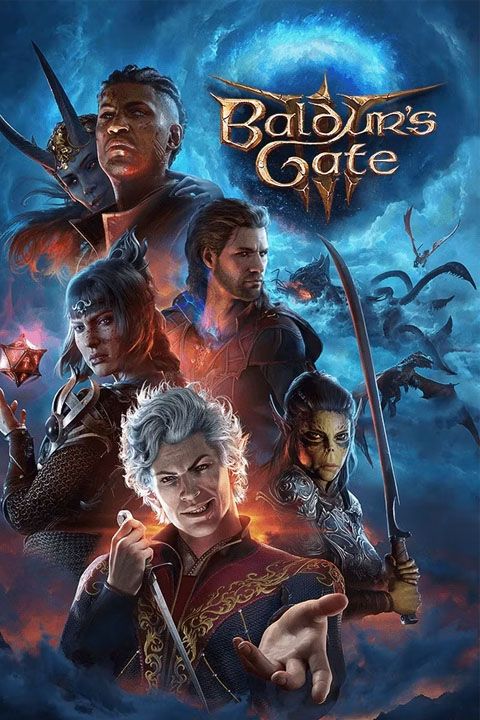
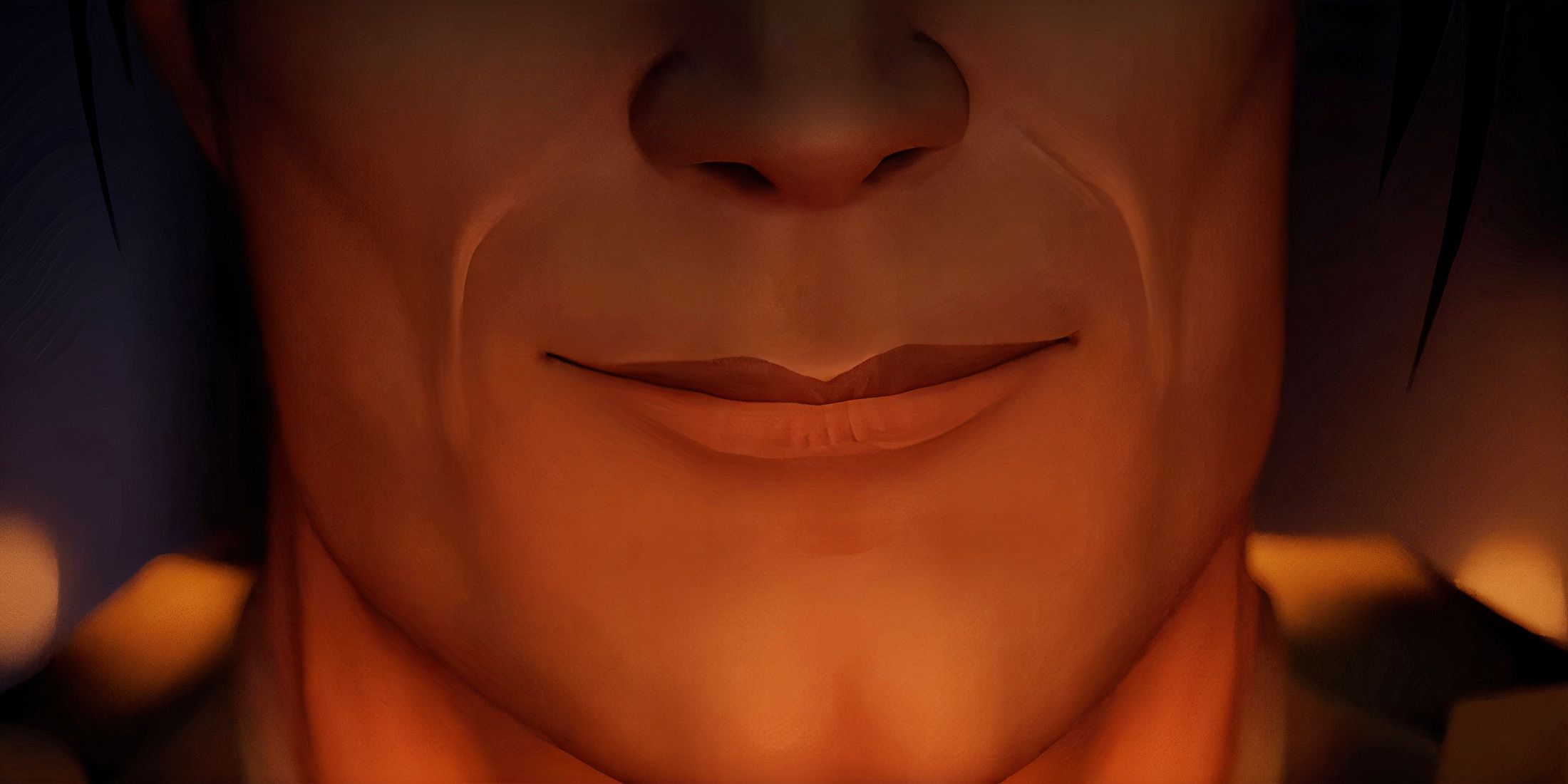
/cdn.vox-cdn.com/uploads/chorus_asset/file/25735095/casio1.jpg)
